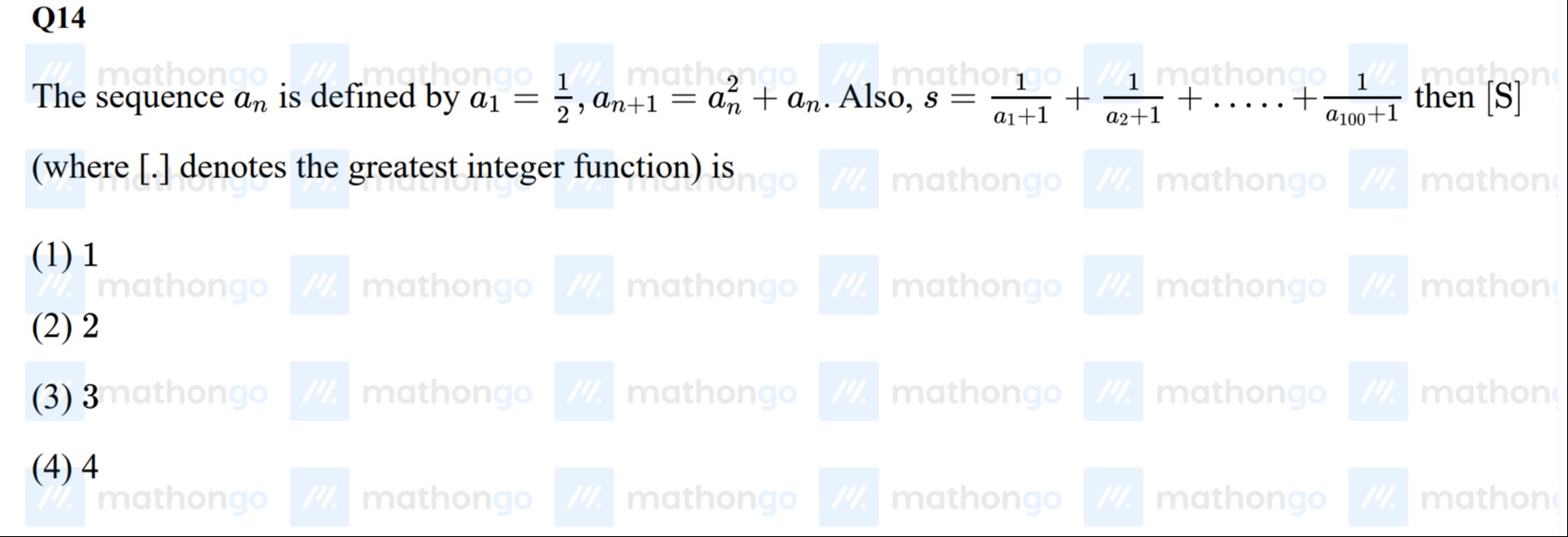Question
Question: The sequence $a_n$ is defined by $a_1=\frac{1}{2}, a_{n+1}=a_n^2+a_n$. Also, $s=\frac{1}{a_1+1}+\fra...
The sequence an is defined by a1=21,an+1=an2+an. Also, s=a1+11+a2+11+.....+a100+11 then [S] (where [.] denotes the greatest integer function) is

A
1
B
2
C
3
D
4
Answer
1
Explanation
Solution
Given the recurrence an+1=an(an+1), we can rewrite the fraction as:
an+11=an(an+1)1
Using partial fractions:
an(an+1)1=an1−an+11
Thus,
an+11=an1−an+11
The sum becomes telescopic:
S=∑n=1100an+11=(a11−a21)+(a21−a31)+⋯+(a1001−a1011)
Telescoping leaves us with:
S=a11−a1011
Given a1=21, we have a11=2. Since the sequence grows very fast, a1011 is extremely small. Therefore,
S≈2−ϵ (ϵ is a very small positive number).
Thus, the greatest integer [S] is [S]=1.
